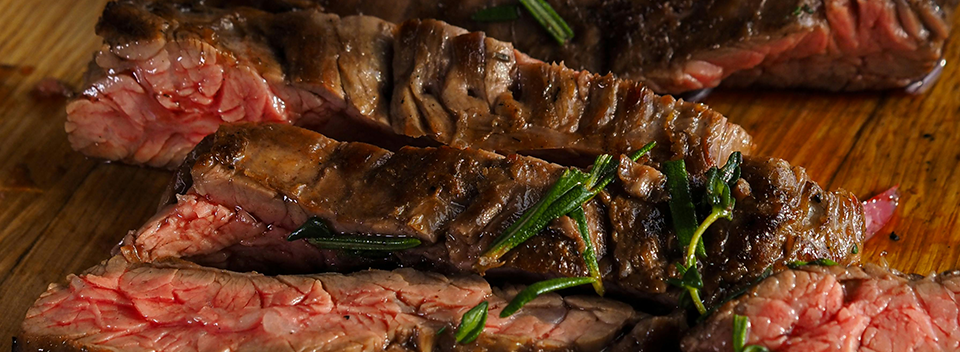
A K-State meat scientist says consumers should consider food safety and choose whichever beef thawing method best suits their needs.
K-State: Thawing method does not seem to affect beef quality
K-State graduate student shares research at Cattlemen’s Day
At a glance: The method in which consumers thaw beef does not seem to have an impact on the quality of the product once it hits the dinner table, according to a study by a K-State meat science student.
More information: Lindsey Decker, lkdecker@ksu.edu, Travis O’Quinn, travisoquinn@ksu.edu
Related: K-State Cattlemen’s Day Reports
March 11, 2024
By Maddy Rohr, K-State Research and Extension news service
MANHATTAN, Kan. – Thawing does not seem to have an impact on the quality of beef by the time it hits the consumer’s table, according to a study by a Kansas State University graduate student.
Meat science student Lindsey Decker recently reported her results of tests on the palatability of strip loin steaks during K-State’s Cattlemen’s Day.
“With the rise in direct-to-consumer beef marketing, and consumers more frequently freezing beef due to supply chain disruptions, it was our goal to determine whether the method of thawing beef steaks effected sensory characteristics and instrumental quality measures,” Decker said.
Decker said the USDA lists many ways to thaw frozen beef, but little information is available on how thawing impacts beef quality and consumer’s eating experience. Beef is known as a premium protein product and consumers expect a high-quality eating experience each time they eat it, she said.
In her study, Decker tested multiple USDA thaw methods, including thawing in the fridge, microwave and cold water; and cooking directly from the frozen state. She also tested two methods commonly utilized by consumers: Thawing in hot water and thawing on the counter. Decker worked with trained and consumer sensory panelists.
“Our trained panelists were trained over several days to determine specific quality characteristics, such as beef flavor attributes, connective tissue level, or juiciness, while consumers were pulled from the Manhattan area and had no training,” Decker said. “The goal of running all of these tests was to find any differences caused by the various thawing methods; whether they were detectable by consumers; and provide further context to those results through the instrumental measures.”
Decker used instrumental quality measures such as Warner-Bratzler Shear Force as an indicator of tenderness, pressed juice percentage as an indicator of juiciness and performed laboratory assays such as TBARRs as an indicator of lipid oxidation.
“As a whole, the thawing method does not have an impact on the palatability of strip loins steaks,” Decker concluded, noting that consumers detected no significant differences among all six thawing methods, and trained panelists found few differences across all six thawing methods.
“Consumers should be sure to consider food safety and choose whichever method best suits their needs,” Decker said. “Research such as this allows consumers to understand, and best manage beef at home so they continue to have excellent eating experiences.”
Decker’s full report, and other research reports presented during this year’s Cattlemen’s Day, is available online from K-State’s Department of Animal Sciences and Industry.
***

K‑State Research and Extension is a short name for the Kansas State University Agricultural Experiment Station and Cooperative Extension Service, a program designed to generate and distribute useful knowledge for the well‑being of Kansans. Supported by county, state, federal and private funds, the program has county extension offices, experiment fields, area extension offices and regional research centers statewide. Its headquarters is on the K‑State campus in Manhattan. For more information, visit www.ksre.ksu.edu. K-State Research and Extension is an equal opportunity provider and employer.